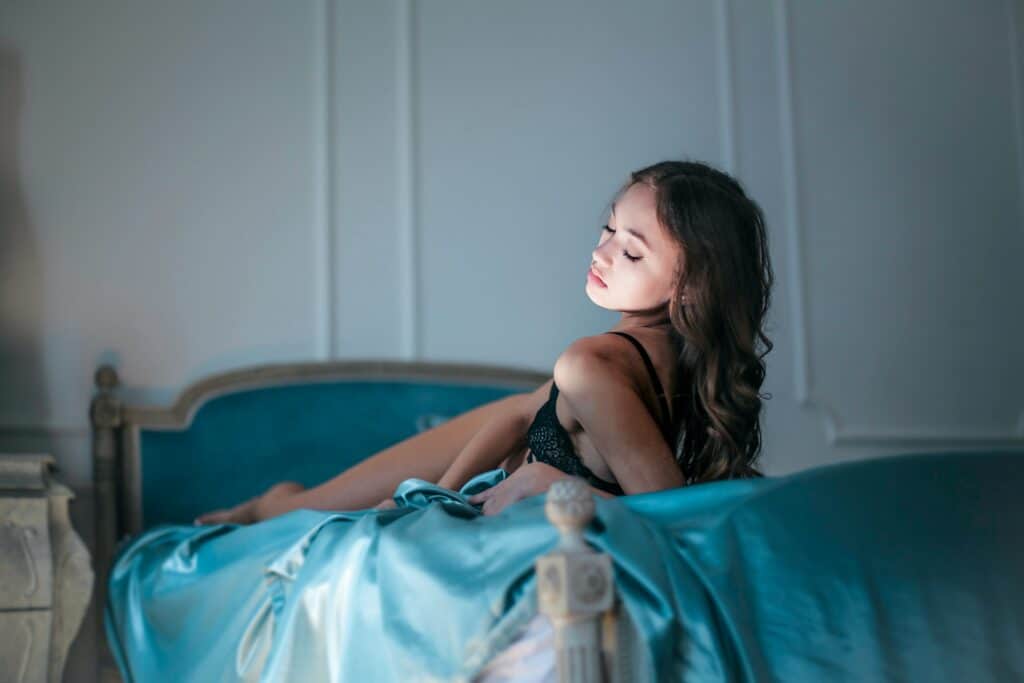People are beautiful. Every person deserves to feel gorgeous, sexy, and most importantly – confident. Boudoir photography is a fantastic way to achieve all three! It generally refers to empowering images of women in their favorite intimate garb, but it is so much more than that (and not gender-specific anymore).
Boudoir is not the same as just lingerie photography (which is often associated more with fashion or glamour photography), it has its own specific set of characteristics. As well as this, the motive behind boudoir is to have individuals feeling confident in themselves and their sensuality, and as such, has certain lighting and location needs.
What is Boudoir Photography?
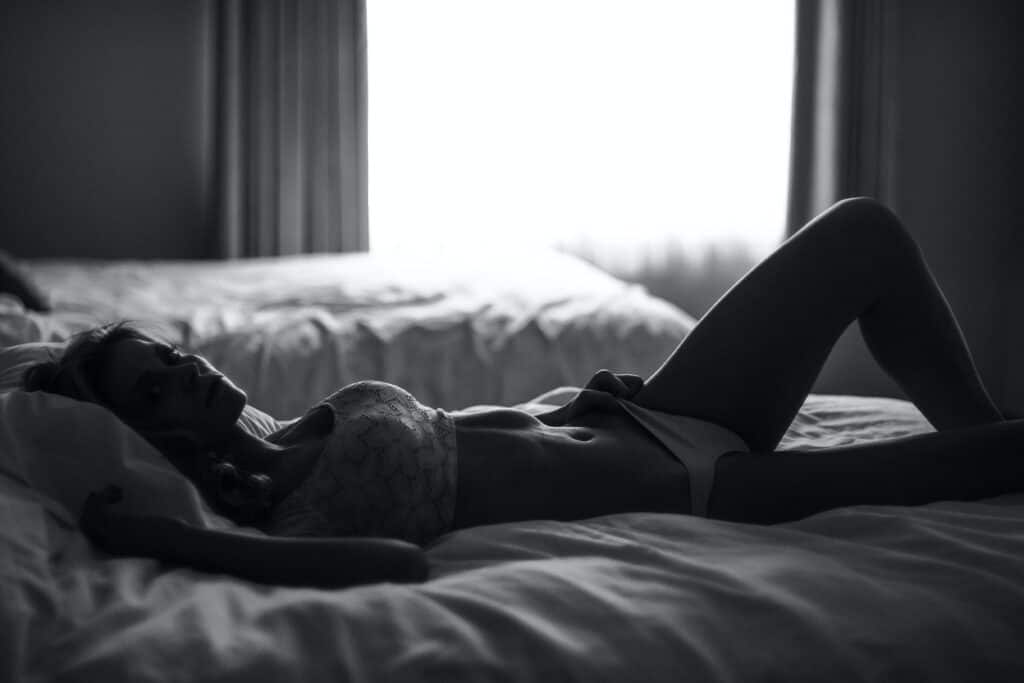
The term “boudoir” itself gives way to what this type of photo shoot is. It is a French word, and it refers to a woman’s private dressing room. It’s an intimate place that she has all to herself.
Boudoir photography is intimate, romantic, and sometimes sensual photography, typically done in a private setting like a bedroom or a cozy, elegant space.
What is the purpose of boudoir photos?
The goal is to capture the subject in a way that highlights their beauty, vulnerability, and confidence. Boudoir photos often feature subjects in lingerie or partial states of undress, but the focus is on tasteful and artistic expression rather than explicit content.
These photos are popular for personal gifts or as a way to celebrate one’s own body and self-love.
Boudoir Characteristics
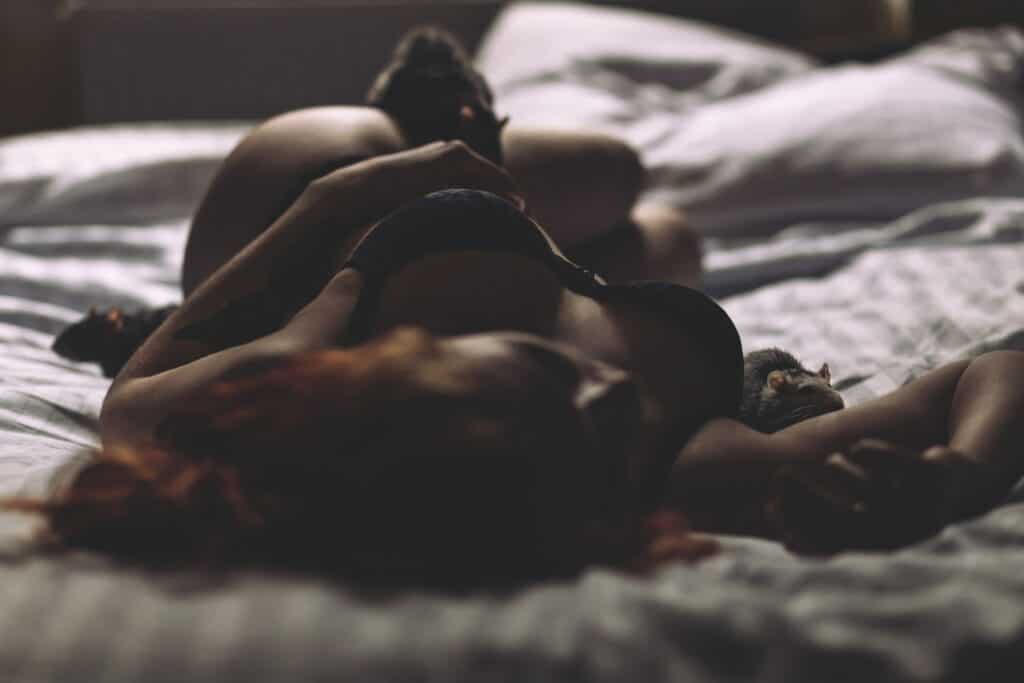
Although clients tend to associate boudoir with fashion photography or glamour portraits, it holds characteristics that are all its own.
For starters, the motive for boudoir photographs set it apart. The photo sessions are typically done for everyone, not just the professional model. The motive behind that is to capture the beauty and sensuality of anyone, rather than selling an idea of glamour. This requires a lot of open communication between the subject and the photographer and develops a unique client relationship unlike any other.
Second of all, boudoir has to take place in an intimate space. A bedroom is the most common setting, but it can range from different rooms in the house to dressing rooms in a theater.
Third, it poses comprise of making the subject feel their sexiest rather than anything else. The poses are all about the subject, not the location or attire.
What makes a good boudoir photo?
A good boudoir photo reveals the beauty and sensuality of a person. It is done in an intimate space and makes the person look the sexiest ever.
What is the Difference Between Lingerie Photography and Boudoir?
There may be a difficulty in differentiating between, lingerie photography and boudoir. As such, the two get confused often. So, what is the difference?
Intent.
Lingerie photography is a type of fashion photography which holds unique characteristics that differentiate itself from other genres. In fashion photography, clothing is the primary subject and styling holds the utmost importance.
Models are posing in ways that highlight the clothing rather than the model. This can be further expanded upon by the composition being focused around the clothing. Although a person is wearing fashion, the subject is the fashion. The person is akin to a mannequin.
This rings very differently to boudoir photography in which the subject is the person, the clothing and styling are just accessories!

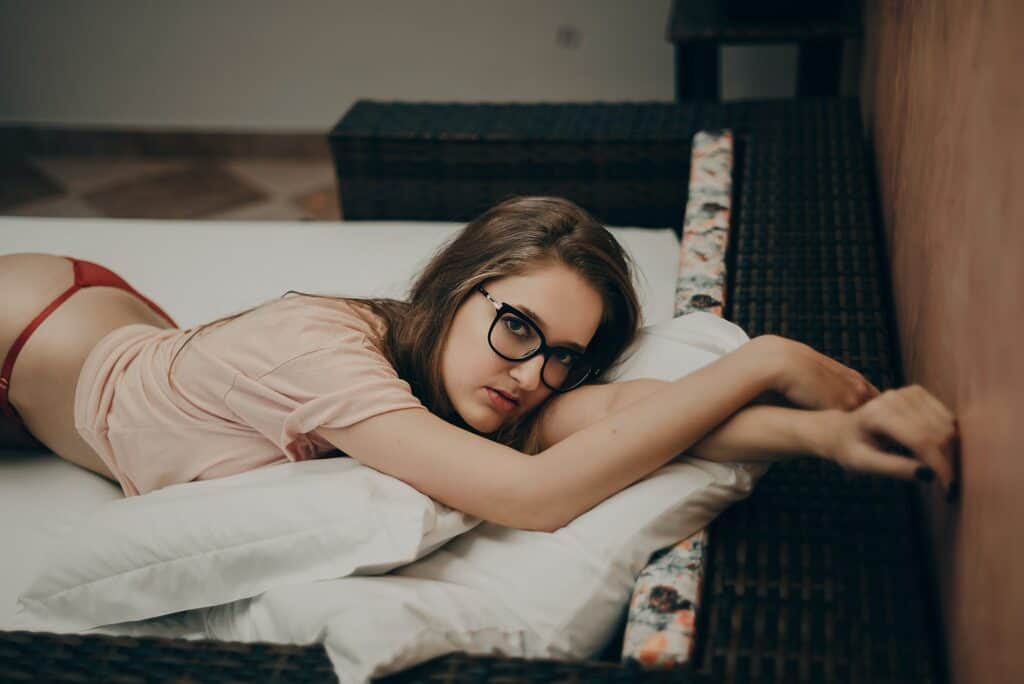
Are Outdoor Sessions Considered Boudoir?
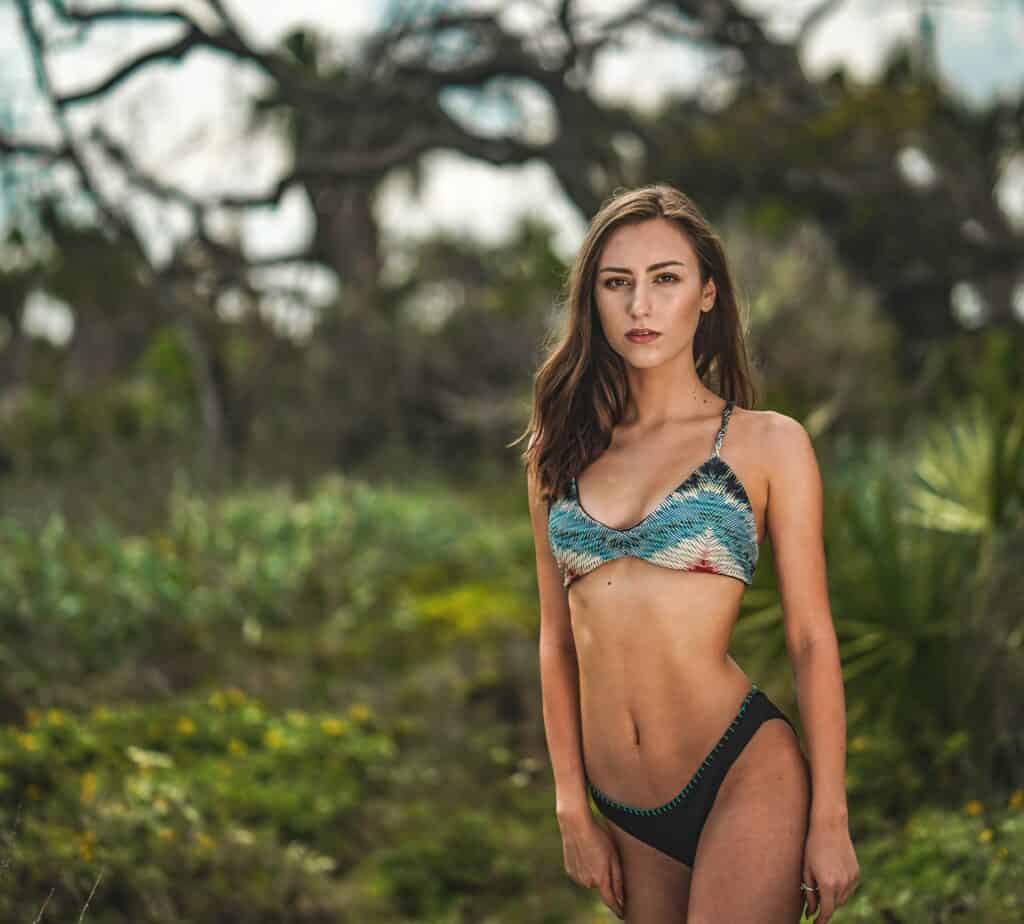
There is a big debate in the photography community as to whether or not outdoor sessions are boudoir or not. Because the term originally represents an individual’s intimate space, outdoors, by default, are not really intimate. However, there really is no reason not to consider the outdoors as a place for boudoir – for some people, being a part of nature is intimate. Don’t rule nature out!
Lighting for Boudoir Sessions
Here are some common ideas for boudoir session lighting.
Natural Light
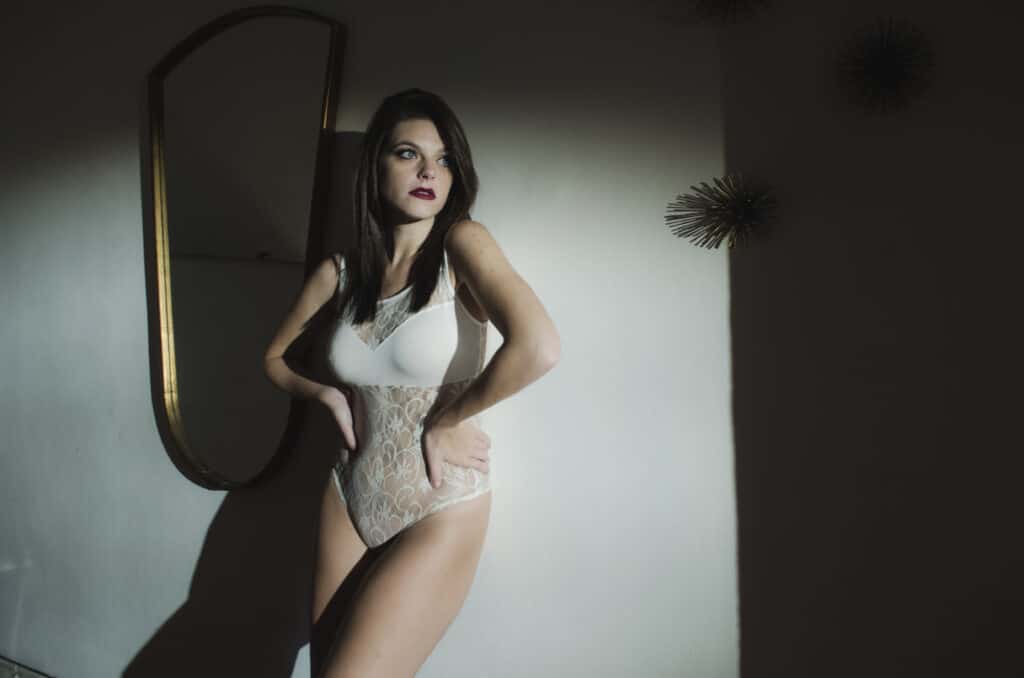
With boudoir photography, utilizing natural light is quite common. The sultry images in the bedroom tend to be illuminated by natural light escaping the window. Natural light offers more airy or moody photos (depending on the edit).
Natural light offers a softness that artificial light may not. It can create a more empathetic scene. But natural light also has the downside of being uncontrollable. The sun may creep into unflattering angles on the model and will need you to work with it. Moving a studio lamp can be more comfortable.
My suggestion for natural light is to have the model turn her face towards the light source.
If you are outdoors, you don’t have much control over the outside world. But you can photograph your model during some of the more flattering times of day – such as the golden hour.
The golden hour is right when the sun is beginning to rise or set and is near parallel with your subject.
When the light hits the glass of your lens just right, the scene appears golden. This is a great time for a boudoir photographer to capture images because the lighting is even.
Another great time to photograph boudoir outdoors is when it is overcast. The clouds act as a giant diffuser in front of the scene. This softens the light and eliminates harsh contrast caused by shadows and highlights.
Studio Light
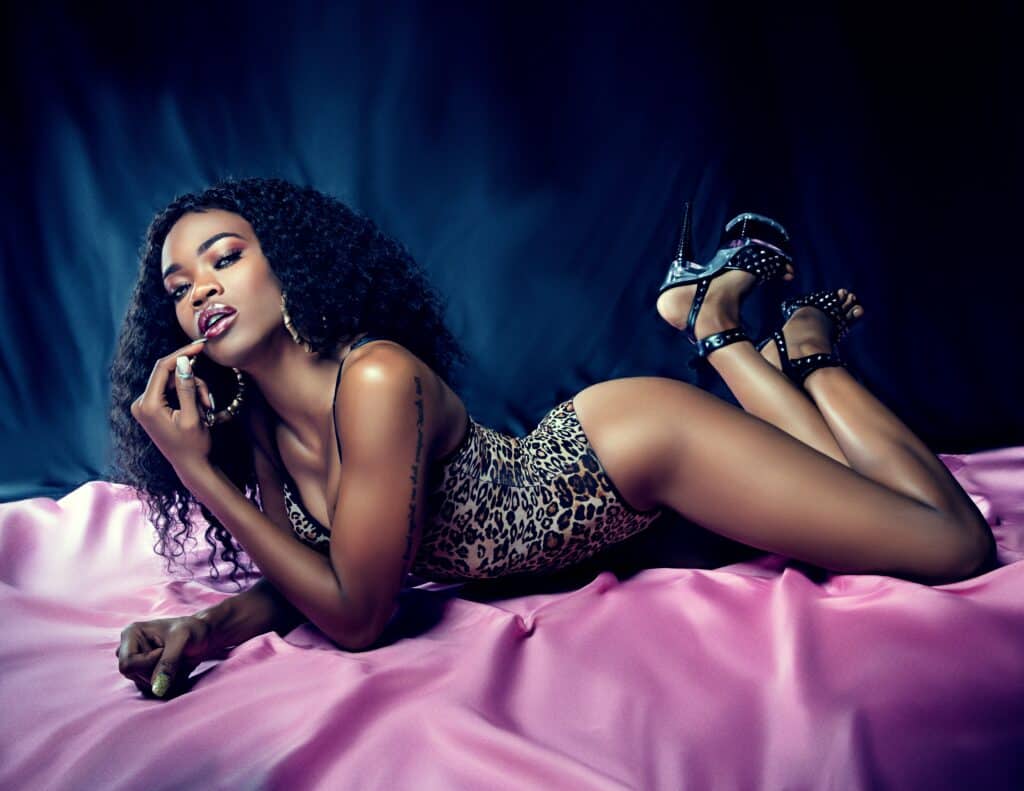
If natural light isn’t your forte and you still want to pack light, you can use a strobe, Speedlite, or flash!
These units are portable and can fill any room up with light. This is a great choice when shooting boudoir photography at night or in a place that doesn’t have any windows.
A common way of using off-camera flashes is to aim the flash to the ceiling or towards a wall. Don’t point towards the subject because the light will be very harsh and unflattering. By bouncing off of something, the light softens and looks more flattering.
If you have access to more than one flash, you can set the others and fire them off at the same time as your first flash. Try positioning these lights to the side of your subject to illuminate her hair. This is known as the Triangle Arrangement.
The Triangle Arrangement can be done with both continuous light and flashes. All you need are three lights and stands for them.
The arrangement requires one light in front of the subject and two lights at the sides. The two lights in the back provide your subject separation. If you want the background to be illuminated in order to separate your subject, turn these lights towards your background wall. If you want the subject to be separated due to a rim light around their figure, turn these lights towards the subject.
The light in the front always stays in place, because that illuminates the face and body. You want this light to be hanging higher than the subject but pointing down towards him or her. Not directly overhead, but a few inches in front.
You can achieve the same with continuous lighting, or studio lights that do not flash. Make note that studio lights that do not flash are much weaker than those that do, so you will need to bump your ISO up.
Who is boudoir photography for?
Although we commonly associate boudoir with women, boudoir with men is absolutely possible! The genre is not gender-specific, and is for anyone who wants to feel empowered, confident, sexy. It is popular among people of all genders, ages, and body types.
Conclusion
Boudoir photography is a captivating and empowering art form that celebrates its subjects’ unique beauty and sensuality. It transcends traditional photography by capturing raw vulnerability and allure, creating stunning images that clients will cherish for years.
Now that you’ve learned more about boudoir photography, do you feel prepared to help your clients embrace this intimate experience? Are you eager to capture their confidence and sensuality through your lens, creating exceptional, empowering images?
